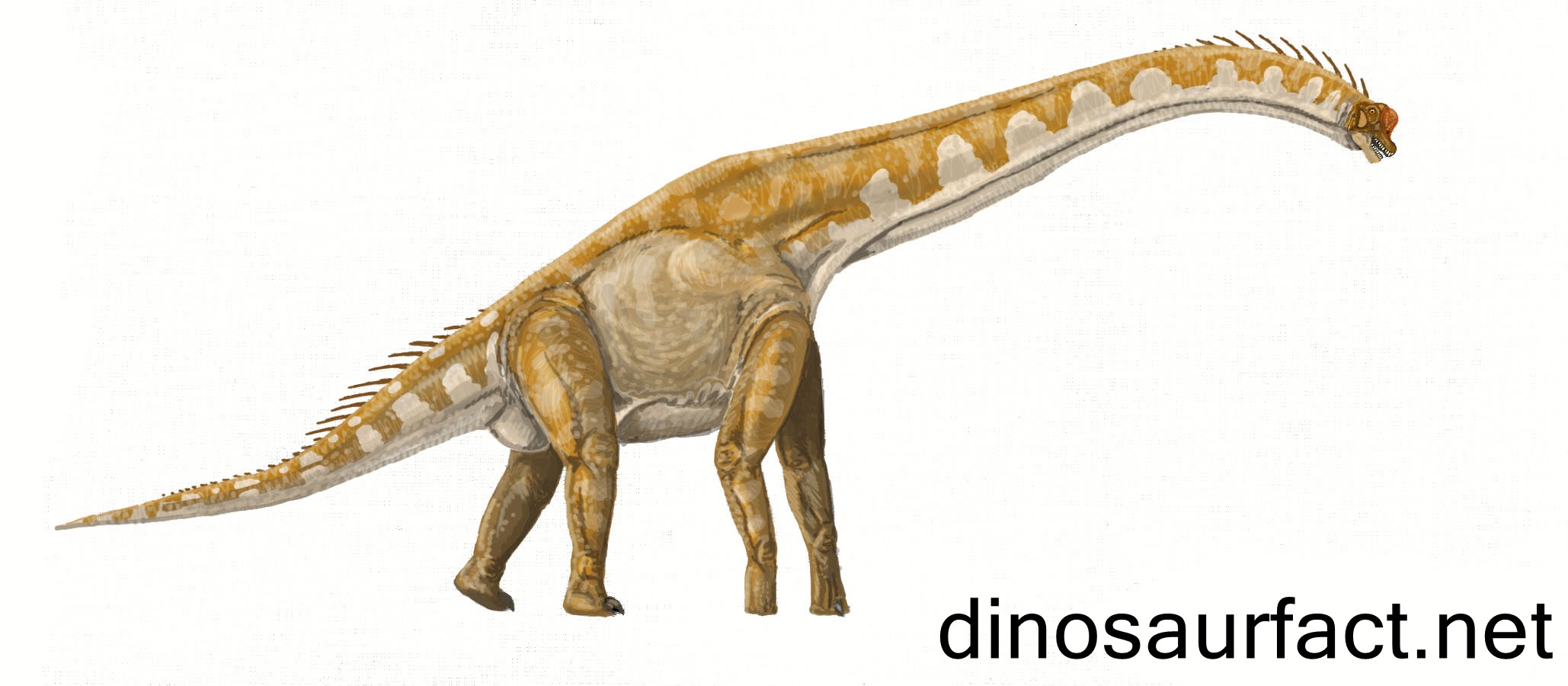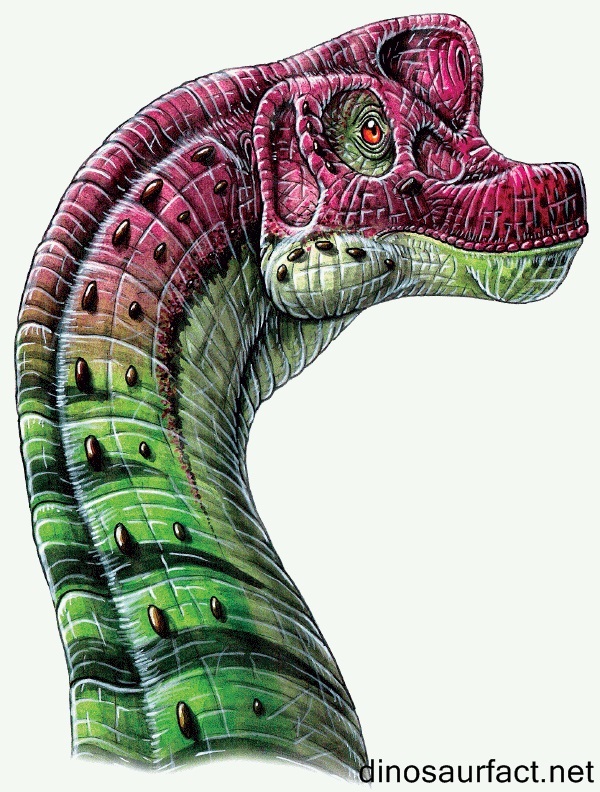 Click to visit the previous dinosaur bio
Click to visit the previous dinosaur bio
 |
|
 |
|
Kingdom: Animalia
Phylum: Chordata
Class: Sauropsida
SuperOrder: Dinosauria
SubOrder: Sauropodomorpha
Family: Brachiosauridae
Genus: Giraffatitan Brancai
 |
|
 |
|
 |
|

Accentuated by the numerous creature features over the years, the one image of dinosaurs we have, is that of meat eating, hulking, petrifying monsters. With huge carnivorous dinosaurs roaming every part of the earth in the Jurassic age, one wonders, as to how the herbivores used to survive in that era. Amidst their big, towering carnivorous counterparts, the herbivores must’ve been a small and a puny presence, right? Wrong.
Behold, the Giraffatitan. At 26 meters long and almost 15 meters tall, this humble, plant eating dinosaur, gave the Tyrannosaurus, a run for its money in physical build. One of the largest dinosaurs ever discovered, this four legged wonder, roamed Africa around one hundred and fifty million years ago.
If you’re wondering what it must’ve looked like, race your mind to the first time you saw the film ‘Jurassic Park’. The first dinosaur that Sam Neill sees on entering the park, was the Giraffatitan.
The discovery
- It was the German fossilist Werner Janensch, who first discovered and classified the Giraffatitan Brancai in the year 1914. He initially called the dinosaur as the ‘Brachiosaurus brancai’.
- Its existence, was supported by many specimens, recovered between 1909 and 1912 from the Tendaguru formation, close to Lindi, in what was then German East Africa, and is today known as Tanzania.
- Our knowledge about the Giraffatitan, is derived solely from 5 partial skeletons, together with 3 bones and various fractional remains together with skull material, some bones and teeth
- It lived from one hundred and forty five to a hundred and fifty million years ago, throughout late geological period.
- A specimen of Giraffatitan brancai situated in Berlin has the distinguished honor of being the largest skeletal assemblage ever. This has been certified by the Guinness book of world records.
- Little is known of the Giraffatitan blood type. Was it warm blooded? Or was it cold blooded? Had it been warm blooded, it would’ve attained it’s full form in 10 years. But, had it been cold blooded, it would’ve taken it at least a 100 years, to attain its full form. Thus, in a rare series of events, the blood type also determined it’s mortality.
- In order to sustain its bulky build, the Giraffatitian, in all probability, must have been required to eat over 182 kilograms (400 lb.) of food per day. If the Giraffatitan was absolutely cold-blooded or was a passive bulk endotherm, it'd have required way less food to satiate its daily energy desires.
- Contrary to some reports of it also dwelling underwater, the current reports have concluded that the Giraffatitan was a totally terrestrial animal. Studies have incontestably shown, that water pressure would have prevented the animal from inhaling effectively. On the other hand, it’s legs have been concluded to have been too slim to support it under water.
The diet
Now imagine a creature, weighing ten times the size of an African elephant, and you’ll be able to estimate the amount of food the Giraffatitan must’ve consumed on an everyday basis, to sustain its massive frame.
The appearance
There have even been suggestions of it possibly possessing elephant like trunks.
However, a stronger proof for the absence of a trunk is found within the teeth wear of Giraffatitan, that shows the type of wear and tear that may result from biting and tearing off of plant matter instead of strictly grinding, which might be the results of having already ripped the leaves and branches off with its trunk.
One physical appearance of the Giraffatitan, that has fascinated fossilists over the years, is the positioning of its nostrils. The positioning of its nasal holes, has given birth to a parallel theory, of the Giraffatitan being semi-aquatic i.e. it, dividing it’s time between land and water. The nostrils were found on its skull, that had a crest like formation.
Some paleontologists have indicated, that the nostrils, were further towards the snout, and the crest in fact provided a support for a resonator. If correct, this could have amplified the calls of Giraffatitan providing stronger inter-species communication. Or perhaps it was used for the purpose of attracting a mate, displaying herd dominance between rivals or maybe keeping in communication, with distant herd members.
Brachiosaurus and Giraffatitan- The name game
Brachiosaurs were Sauropods (large, long-necked dinosaurs) that lived throughout the late geological period and early Cretaceous. Brachiosaurs had front legs that were longer than their back legs. Brachiosaurs were the “giraffes” of the era, their long stiff necks gave them an access, to the highest points of the trees. This also gave them access to a food provides that was out of reach of most dinosaurs.
Brachiosaurus was named and recognized in the year 1903, by the fossilist, Elmer Riggs. Though incomplete, these fossils indicated that this was a brand new kind of archosaurian reptile and thus, the Brachiosaurus genus came into being.
The debate started, when the year 1988 saw comparisons being made between the two discovered species. It was found out that there were a variety of anatomical variations between the two fossil specimens.
Thus, the new species, was named the Giraffatitan. Though some believe that it was a different species altogether, many still contest this statement, and claim, that it was indeed a part of the Brachiosaurs family.
Whatever the name might turn out to be, the image of the Giraffatitan, will always be one of a four legged, tall necked massive dinosaur, trying to stand on its front legs in order to eat the top most leaves of a tree.
Index
Extinct Profiles
 Triassic Dinosaurs
Triassic Dinosaurs Jurassic Dinosaurs
Jurassic Dinosaurs Cretaceous Dinosaurs
Cretaceous Dinosaurs Pterosaurs
Pterosaurs Marine Reptiles
Marine Reptiles Dinosaur Extinction
Dinosaur Extinction